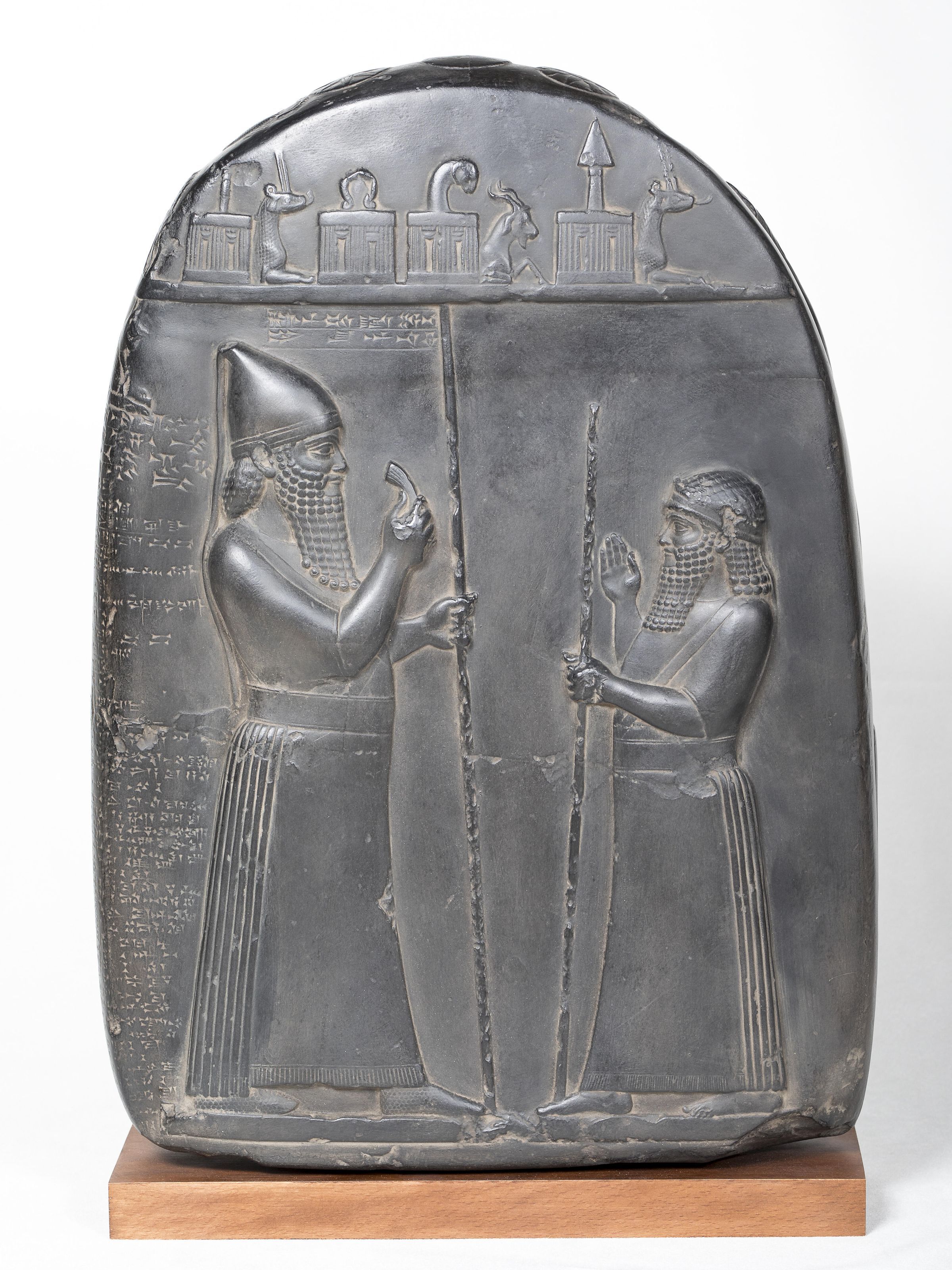Boundary Stone with Inculcation Ceremony
Name/Title
Boundary Stone with Inculcation CeremonyEntry/Object ID
18NE09225Description
Stone deed with Inculcation ceremony (a legal agreement). Sculpture in the round. The front consists of two men, one with a crown, standing facing each other. Various anamorphic gods rest on a register above the men. Cuneiform writing on the back and sides of the relief.Type of Sculpture
ReliefArtwork Details
Medium
PlasterContext
A boundary stone, or kudduru, was a stone deed inscribed with a text that provided a description of the land and a statement of the term for which the grant was being made. This example, made of grey limestone, is the best known of three kuddurus surviving from the reign of Babylonian king Marduk-apla-iddina II (721-710; 703 BCE), who is also known by his Biblical name, Merdoach-Baladan (Isaiah 39:1; 2 Kings 20:12). On one side, Marduk-apla-iddina II and his vassal Bel-ahhe-eriba, governor of Babylon, face one another. Bel-ahhe-eriba has one hand raised in a gesture of respect while the king is holding an object related to the ceremony depicted, in which the king made a grant of land to Bel-ahhe-eriba. Kings would often gift land to vassals to ensure their loyalty. An inscription directly above the king’s head reads: “Image of Marduk-apla-iddina, King of Babylon.” Above the men are symbols representing the gods Marduk (a snake-dragon), Ea (goat-fish and/or ram’s head), and Nabu (a wedge and snake-dragon). An extensive cuneiform text appears on the back and sides of the stone. It begins with a hymn to the god Marduk, praising him for choosing Marduk-apla-iddina as ruler and the king’s desire to rule Babylon with justice. The inscription goes on to praise the king’s attention and care of temples and his bestowal of tax relief on the cities of Babylon and Borsippa. It then describes land, consisting of fields and an orchard, which the king grants to Bel-ahhe-eriba. Finally, it is witnessed by a variety of high-ranking individuals, including the crown prince and a high priest. A date provided in the text—the 23rd day of the month Duzu in the seventh year of Marduk-apla-iddina’s reign—places the land-grant ceremony in the summer of 715 BCE. Kuddurus were usually placed inside the temple where the land-grant ceremony took place as a sort of permanent display and record of the bestowal recorded by their inscriptions, and were treated as official records that could be consulted should disputes arise.Made/Created
Date made
752 BCE - 752 BCETime Period
Iron AgeEthnography
Culture/Tribe
Near Eastern - Babylonian

